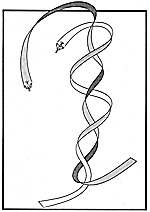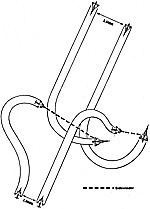First Came: LUFTWAFFE FIGHTER ACES by Mike Spick
then ALLIED FIGHTER ACES by Mike Spick
and now: The Complete Fighter Ace, All the World's Fighter Aces, 1914–2000 by Mike Spick
 Whether duelling over the trenches of World War I or engaging in the high speed intensity of modern warfare, comparatively few men have excelled at the art of air fighting and become fighter aces. This new, detailed chronological account traces the rise of these outstanding pilots, and developments in their tactics, techniques and aircraft, and outlines the individual skills and abilities that set them apart from other pilots.
Whether duelling over the trenches of World War I or engaging in the high speed intensity of modern warfare, comparatively few men have excelled at the art of air fighting and become fighter aces. This new, detailed chronological account traces the rise of these outstanding pilots, and developments in their tactics, techniques and aircraft, and outlines the individual skills and abilities that set them apart from other pilots.
The Complete Fighter Ace gives a conflict-by-conflict narrative of aerial warfare, examines the fighting record and tactics of the major aces, gives the names and victory totals of all the aces of every nation involved, outlines the various factors contributing to the pilots' success, and details the performance of both the aces' aircraft and those flown by their enemies and victims.
Written by a leading expert in aviation history, this comprehensive guide gathers together in one volume a vast array of data, as well as biographical information on key personalities, and covers all the aces from the pilots of the RFC over Flanders and Chinese aces of World War II to modern aces of the jet and missile age.
Writing about the scores of the aces in the new book, Mike Spick says:
In theory accuracy should be simple. Every victory demands a victim, and a check on the wrecks on the ground should give the answer. Unfortunately it does not, and for many reasons. If the victim falls into a lake or the sea, the wreck may never be discovered. Half a century after the end of World War II, remains are still occasionally found, deep in a forest or a swamp. The artillery barrages of World War I destroyed many fallen aircraft; for example, the final resting place of French ace Georges Guynemer has never been located.
The next factor is sheer confusion. A claim made after a one-versus-one encounter, where the claimant saw his opponent hit the ground, was generally absolutely accurate; but if the victim disappeared into cloud, or the victor had to leave the scene quickly, through, for example, fuel shortage or because of the approach of a superior enemy force, an element of doubt remained.
A claim made as the result of a small-scale action is generally a little less accurate, mainly because of the need to look out for other aircraft in the immediate area. Less time is available for watching the original victim.
 Multi-bogey fights, with dozens of aircraft milling about, are far more difficult. A pilot gets his sights on, fires, scores hits and sees his opponent start to go down. He must then clear his own tail as a matter of extreme urgency. Getting clear of the ruck for an instant, he looks around and sees an enemy aircraft in flames. He is pretty sure that it is his victim, but that slight element of uncertainty remains. Was he the only one to attack it? There are recorded cases of aircraft being attacked several times in quick succession before crashing, and being claimed by all (and credited to them) in good faith. Then, of course, from high altitudes it is virtually impossible to see a victim actually crash.
Multi-bogey fights, with dozens of aircraft milling about, are far more difficult. A pilot gets his sights on, fires, scores hits and sees his opponent start to go down. He must then clear his own tail as a matter of extreme urgency. Getting clear of the ruck for an instant, he looks around and sees an enemy aircraft in flames. He is pretty sure that it is his victim, but that slight element of uncertainty remains. Was he the only one to attack it? There are recorded cases of aircraft being attacked several times in quick succession before crashing, and being claimed by all (and credited to them) in good faith. Then, of course, from high altitudes it is virtually impossible to see a victim actually crash.
Overclaiming is strongly linked to the confusion factor: the greater the number of aircraft in the fight, the higher the ratio of claims to actual victories. Unfortunately the discrepancies will never be resolved. Sometimes victims claimed as 'probable'or 'damaged' have later been confirmed as 'destroyed', but do not appear as such in the records. In far more cases, claims exceed known losses.
The Complete Fighter Ace will have 16 pages of black and white photographs, plus twenty-five diagrams showing how the reader can also become a fighter ace. It will be released in October.
Back to Greenhill Military Book News No. 94 Table of Contents
Back to Greenhill Military Book News List of Issues
Back to Master Magazine List
© Copyright 1999 by Greenhill Books
This article appears in MagWeb (Magazine Web) on the Internet World Wide Web.
Other military history articles and gaming articles are available at http://www.magweb.com